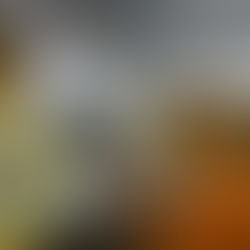Feed and Fines – Maximizing the value with Fermented Feed!

One of the most frequently asked questions about Scratch & Peck feed is, “Why are there all these fines in the feed and how do I get my chickens to eat it?”
This question is important as it identifies one of Scratch & Peck's core philosophies as a company; that a raw, whole grain feed is nutritionally superior to highly processed products. Most feed mills producing poultry feed use a combination of heat and water to process their products into pellets and crumbles, while we focus on providing a product that is as raw and natural as possible.
The ‘fines’ present in Scratch & Peck's balanced feeds are the added protein, probiotics, vitamins and minerals that support an animal’s health and development. Most customers feed Scratch & Peck's products dry and it is usually not a problem as long as the birds are also ingesting those important fines. Recommendations for helping the flock to eat all the fines include adding the accumulated fines to the top of the new feed, using a trough-style feeder, raising the feeder to the height of the bird’s back, collecting fines to include in yogurt or an oatmeal treat, or simply adding moisture to the mix prior to feeding. Fermenting feed is simply taking these recommendations a few steps further!
Lacto-fermentation has been used for thousands of years for human and animal nutrition. Lactic acid bacteria, like the probiotics you find in Greek yogurt, are beneficial in making your feed easier for the chickens to digest, increase the overall bioavailable nutrients, and stretch your feed dollar further as the birds are able to absorb more from the same amount of feed.
To get started with fermenting feed, you will need to choose containers based on the number of birds you are feeding. If you have a smaller flock, you will likely do just fine using quart or half-gallon sized Mason jars. If you have a larger flock, food-grade buckets or bins will be a better choice. Fermenting feed can be done for all stages of a chickens’ life but may be more palatable with our whole grain feeds than the finer ground Naturally Free Starter.
Simply measure out the estimated amount your flock will consume in one day and place it into whatever container you have selected. (We estimate an adult chicken will consume approximately 1⁄4 - 1⁄3 lb of dry feed per day.) Add
unchlorinated water at about 2-3 parts per one-part feed and let it sit with occasional stirring for up to 3 days with a loose-fitting cover. The best plan is to use a 4-container system so that, as you use up one container, you start a new container each day.
Before feeding, drain off excess water to jump start the next fermentation batch. If the mix is still too runny, try adding
a little dry feed to absorb some of the remaining moisture. Keep in mind, if the fermented feed is too soupy, the chickens will not want to eat it. Our recommendation is to feed the fermented mash in a trough or open dish rather than a gravity style feeder as some clean-up will likely be needed.
While many birds will have no problem transitioning to fermented feed, we do hear from time to time that some owners may have a difficult time convincing their flock to eat wet feed and may choose to stay with a dry feed over time.
To download Scratch & Peck's guide for Fermenting Feed, select ‘Helpful Guides’ at: www.scratchandpeck.com/learning- center/
1. 2. 3.
Photos: 1. Dry Feed 2. Feed Soaked for 3 Hours
3. Feed Fermented for 3 Days
Keep in mind that fermenting feed or adding that leftover powdery feed to yogurt or oatmeal is an option with any feed. Many customers ferment Modesto Milling's Organic Whole Grain Layer with the same probiotic benefit and nutritional benefit that is explained above.
Pick up a bag of Scratch & Peck or Modesto Milling Organic feeds at American Farm and Larder!



















